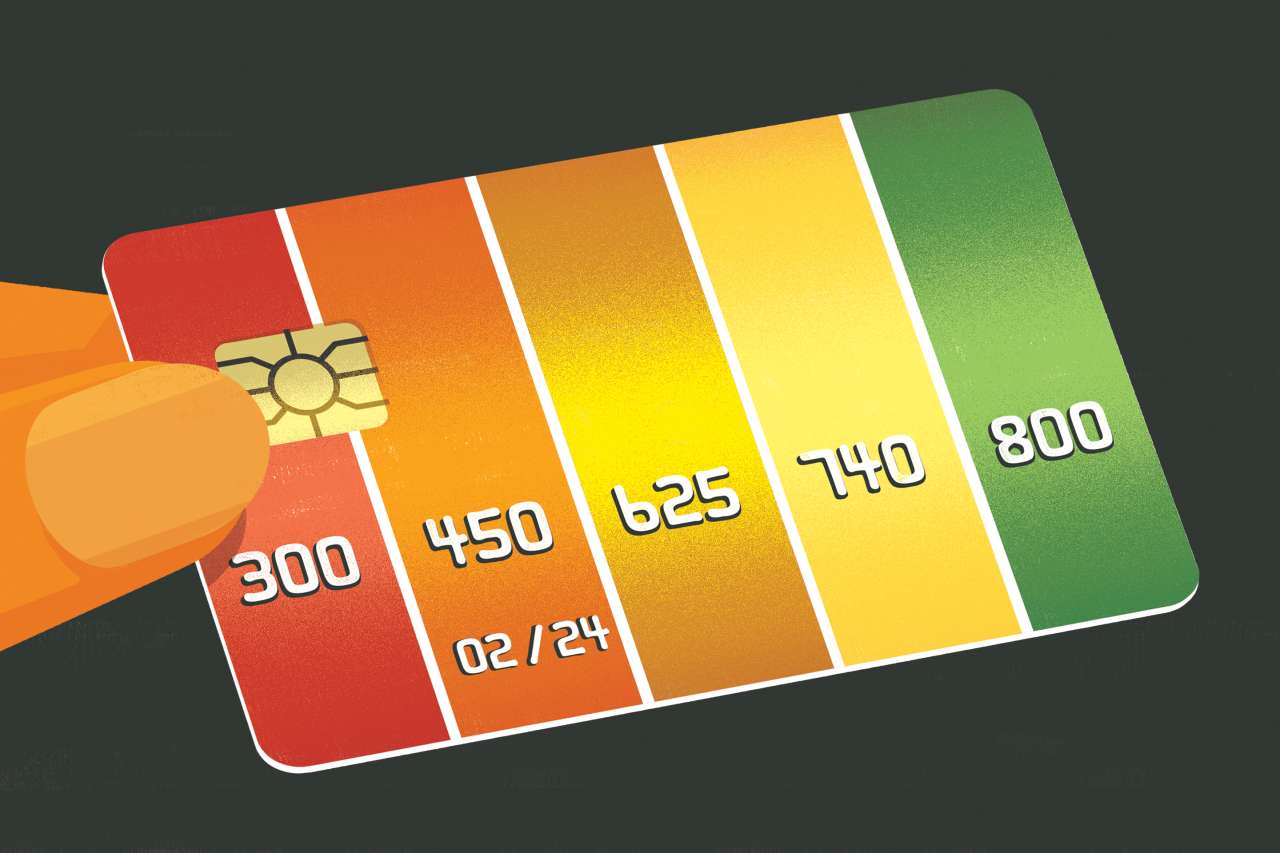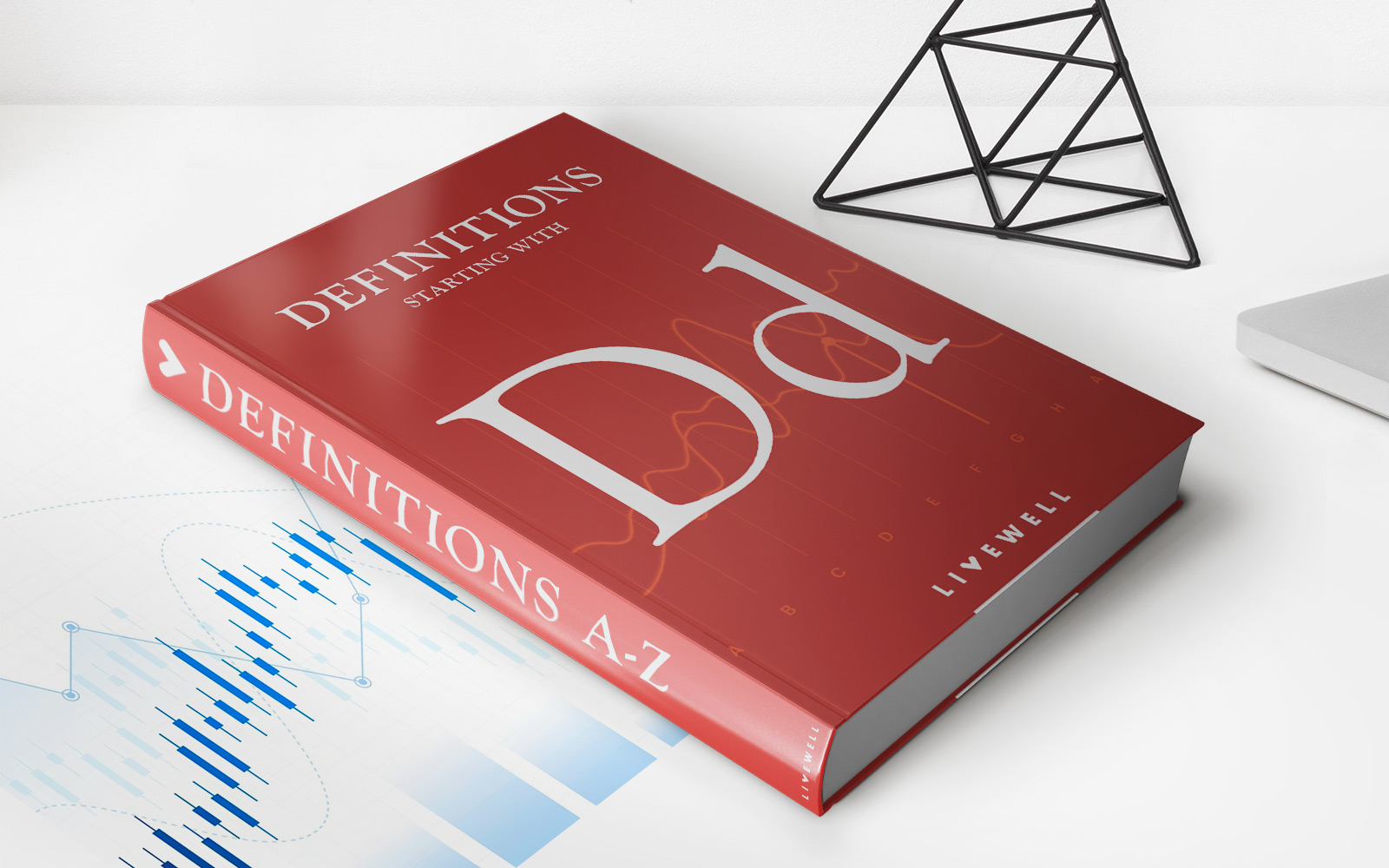

Finance
How Do You Turn Credit Into Cash
Modified: February 21, 2024
Discover how to turn your credit into cash with our finance solutions. Unlock the potential of your credit and access the funds you need today.
(Many of the links in this article redirect to a specific reviewed product. Your purchase of these products through affiliate links helps to generate commission for LiveWell, at no extra cost. Learn more)
Table of Contents
Introduction
In today’s fast-paced world, having access to cash is essential for various reasons, whether it’s for emergencies, unexpected expenses, or simply to indulge in a well-deserved treat. While you may have a credit card in your wallet or a line of credit available, you may wonder how to turn that credit into actual cash.
Understanding the concept of credit is crucial before exploring the different avenues to access cash. Credit refers to the ability to borrow money or use funds that are available to you through various financial institutions or lenders. It allows individuals or businesses to purchase goods or services with the promise to repay the borrowed amount at a later date, often with interest.
There are different types of credit available, ranging from credit cards to personal loans, home equity loans, lines of credit, and more, each serving specific purposes and terms. But is it a good idea to tap into these forms of credit to obtain cash? Let’s delve into the pros and cons of using credit to access cash.
One of the primary advantages of using credit is the convenience it offers. With a credit card, for example, you can make purchases without carrying around large sums of cash. It also provides a safety net in case of emergencies, giving you immediate access to funds when needed. However, it’s essential to use credit responsibly to avoid accumulating excessive debt and damaging your credit history and score.
Now that we understand the significance of credit and the benefits and drawbacks of using it let’s explore the different methods to access cash with credit. In the following sections, we will walk you through various options, including credit cards, personal loans, home equity loans, lines of credit, cash advances, balance transfers, and even tapping into credit rewards. Each option comes with its own set of features, advantages, and considerations.
So, whether you need cash for a last-minute vacation, unexpected medical expenses, or simply to make ends meet, let’s dive into the world of credit and discover how to turn that credit into much-needed cash.
Understanding Credit
Credit is a financial tool that allows individuals and businesses to borrow money or use funds that are available to them through various financial institutions or lenders. It provides the flexibility to make purchases, pay bills, or cover expenses without having to carry around large sums of cash.
When you use credit, you are essentially borrowing money with the promise to repay it later, often with interest. This borrowed amount is reflected in your credit account, and you are typically required to make regular payments towards it until the balance is paid off.
One of the key aspects of credit is your credit score, which is a numerical representation of your creditworthiness. Lenders use this score to assess the risk of lending you money. A high credit score indicates a good credit history and responsible credit management, making it easier for you to obtain credit at favorable terms.
There are different types of credit available, each serving different purposes and having varying terms and conditions. The most common types of credit include:
- Credit Cards: These are revolving lines of credit that allow you to make purchases up to a certain credit limit. You can choose to pay off the full balance each month or make minimum payments.
- Personal Loans: These are lump-sum loans that you can use for a specific purpose, such as home renovations, debt consolidation, or emergency expenses. Personal loans usually have fixed interest rates and set repayment terms.
- Home Equity Loans: These loans allow homeowners to borrow against the equity they have in their property. The loan amount is based on the appraised value of the home minus any outstanding mortgage balance.
- Lines of Credit: Similar to a credit card, a line of credit provides you with a predetermined credit limit that you can borrow from as needed. You only pay interest on the amount you borrow.
- Cash Advances: Some credit cards allow you to withdraw cash from an ATM or get a cash advance from a bank, although this option often comes with higher interest rates and fees.
It’s important to understand the terms and conditions associated with each type of credit before deciding which one is suitable for your needs. This includes interest rates, fees, repayment terms, and any penalties for late or missed payments.
Using credit responsibly is key to maintaining a healthy financial lifestyle. It’s important to make payments on time, keep balances low, and avoid accumulating too much debt. By doing so, you can build a positive credit history and improve your credit score, which will provide you with more opportunities and better terms when accessing credit in the future.
Different Types of Credit
When it comes to accessing cash with credit, there are several different types of credit options available. Understanding the characteristics and features of each type can help you choose the one that best fits your financial needs and goals. Here are some of the most common types of credit:
- Credit Cards: Credit cards are a popular form of revolving credit. They provide you with a line of credit that you can use to make purchases up to a certain limit. You can choose to pay off the full balance each month or make minimum payments. Keep in mind that credit cards often come with high-interest rates, so it’s important to pay off the balance as quickly as possible to avoid accumulating excessive debt.
- Personal Loans: Personal loans are fixed-term loans that you can use for various purposes, such as consolidating debt, making home improvements, or funding a big purchase. These loans usually have fixed interest rates and set repayment terms. Personal loans can be obtained from banks, credit unions, or online lenders. The amount you qualify for depends on factors such as your credit score, income, and debt-to-income ratio.
- Home Equity Loans: If you own a home, you may be able to tap into your home equity through a home equity loan. This type of loan allows you to borrow against the equity you have built up in your property. The loan amount is based on the appraised value of your home minus any outstanding mortgage balance. Home equity loans typically have lower interest rates compared to other forms of credit, and the interest you pay may be tax-deductible in some cases.
- Lines of Credit: Similar to a credit card, a line of credit provides you with a predetermined credit limit that you can access as needed. You can make withdrawals from your line of credit and repay the borrowed amount over time. Interest is charged based on the amount you borrow, and you have the flexibility to borrow and repay multiple times. Lines of credit can be secured, meaning they require collateral such as your home, or unsecured, which does not require collateral.
- Cash Advances: Some credit cards allow you to obtain cash advances, either by using an ATM or requesting a cash advance from the bank. Cash advances often come with higher interest rates and fees compared to regular credit card transactions. It’s important to read the terms and conditions of your credit card agreement to understand the specific fees and interest rates associated with cash advances.
Each type of credit has its own advantages and considerations. It’s essential to evaluate your financial situation and goals before deciding which option is best for accessing cash. Consider factors such as interest rates, repayment terms, fees, and any potential impact on your credit score.
Pros and Cons of Using Credit
Using credit to access cash can be a convenient and flexible financial tool, but it’s important to weigh the pros and cons before making any decisions. Here are some advantages and disadvantages to consider when using credit to obtain cash:
Pros:
- Convenience: Using credit allows for quick and easy access to cash without the need to carry around large amounts of money. With a credit card or line of credit, you can make purchases or withdraw cash whenever you need it.
- Emergency Fund: Credit can serve as a safety net in case of emergencies. If you encounter unexpected expenses, having access to credit can provide immediate relief and help you cover the costs until you have the means to repay the borrowed amount.
- Rewards and Benefits: Many credit cards offer rewards and benefits, such as cashback, travel miles, or discounts on purchases. By using credit strategically, you can take advantage of these perks and potentially save money or earn rewards for your spending.
- Building Credit: Responsible use of credit can help build and improve your credit history and credit score. Making timely payments and keeping your credit utilization low can demonstrate your creditworthiness to lenders, making it easier to access credit in the future at favorable terms.
Cons:
- Interest and Fees: One of the main drawbacks of using credit is the potential cost in terms of interest and fees. Credit cards and loans typically come with interest rates, and if you carry a balance or make only minimum payments, the interest charges can add up over time. It’s important to carefully review and understand the terms and conditions of your credit agreement to avoid excessive interest charges and fees.
- Debt Accumulation: Using credit to access cash can lead to the accumulation of debt if not managed properly. It’s crucial to consider your ability to repay the borrowed amount and ensure that you have a plan in place to reduce your debt over time. Excessive debt can negatively impact your financial well-being and credit score.
- Risk of Overspending: Having access to credit can tempt you to overspend or make impulsive purchases. It’s important to exercise restraint and only use credit for necessary expenses or within your budget. Creating a detailed budget and keeping track of your spending can help you avoid falling into the trap of overspending.
- Credit Score Impact: Utilizing credit can impact your credit score, especially if you carry high balances or make late payments. It’s crucial to make payments on time and ensure that your credit utilization remains low to maintain a positive credit history.
Before using credit to access cash, carefully evaluate your financial situation and consider the pros and cons. It’s important to use credit responsibly, make payments on time, and have a solid plan in place to manage your debt effectively.
How to Access Cash with Credit
There are several ways to access cash using credit, depending on your financial needs and the type of credit you have available. Here are some common methods to consider:
Credit Cards:
Credit cards offer a convenient way to access cash. You can use your credit card to make purchases or withdraw cash from an ATM. Keep in mind that cash withdrawals usually come with additional fees and higher interest rates compared to regular credit card transactions. It’s important to read and understand the terms and conditions of your credit card agreement to be aware of any associated fees or limitations.
Personal Loans:
If you need a larger amount of cash, a personal loan can be a suitable option. Personal loans provide a lump sum amount that you can use for various purposes, and you repay the loan over a fixed term with interest. Personal loans often have lower interest rates compared to credit cards, making them a potentially more cost-effective way to access cash. You can apply for personal loans through banks, credit unions, or online lenders.
Home Equity Loans:
If you are a homeowner and have built up equity in your property, you may be able to access cash through a home equity loan. This type of loan allows you to borrow against the appraised value of your home minus any outstanding mortgage balance. Home equity loans often have lower interest rates compared to other forms of credit, and the interest you pay may be tax-deductible in some cases. However, keep in mind that using your home as collateral means your home is at risk if you are unable to repay the loan.
Lines of Credit:
Lines of credit are revolving credit accounts that provide you with a predetermined credit limit. You can borrow from your line of credit as needed and make repayments over time. Lines of credit offer flexibility, as you only pay interest on the amount you borrow. They can be secured, meaning they require collateral, or unsecured, which does not require collateral. You can obtain lines of credit from banks, credit unions, or other financial institutions.
Cash Advances:
Some credit cards allow you to obtain a cash advance, either by using an ATM or requesting a cash advance from the bank. Cash advances typically come with higher interest rates and fees compared to regular credit card transactions. It’s important to read the terms and conditions of your credit card agreement to understand the specific fees and interest rates associated with cash advances.
Balance Transfers:
If you have credit card debt, you may be able to transfer the balance to another credit card with a lower interest rate or a promotional 0% APR period. This can help consolidate your debt and potentially save money on interest. However, balance transfers often come with fees, so it’s important to calculate the cost-effectiveness before proceeding.
Tapping into Credit Rewards:
If you have credit cards that offer rewards, you may be able to redeem those rewards for cash. Some credit card issuers allow you to convert your rewards points or cashback into statement credits or direct deposits into your bank account. This can be a way to access cash without incurring additional costs.
When considering any method to access cash using credit, it’s important to carefully evaluate your financial situation, read the terms and conditions of the credit agreement, and consider the associated costs. It’s crucial to use credit responsibly, borrow only what you can afford to repay, and have a plan in place to manage your debt effectively.
Credit Cards
Credit cards are a widely used and convenient form of credit that allows you to make purchases and access cash up to a predetermined credit limit. They offer flexibility and convenience, making them a popular choice for many individuals. Here’s how credit cards can be used to access cash:
Making Purchases:
A credit card allows you to make purchases at various merchants, online retailers, and service providers. You can use your credit card just like a regular payment method, and the amount you spend is added to your outstanding credit card balance. It’s important to use credit cards responsibly and keep track of your spending to avoid overspending and accumulating excessive debt.
Withdrawing Cash:
Another way to access cash with a credit card is by using it to withdraw cash from an ATM. This feature is known as a cash advance. Keep in mind that cash advances typically come with higher interest rates and fees compared to regular credit card purchases. Additionally, interest on cash advances often starts accruing immediately, without the usual grace period for regular purchases. It’s essential to read and understand the terms and conditions of your credit card agreement to be aware of any associated fees and limitations.
Balance Transfers:
If you have existing credit card debt with high-interest rates, you may consider a balance transfer to a new credit card with a lower interest rate or a promotional 0% APR period. Balance transfers allow you to move the existing debt to another credit card, potentially reducing the overall interest paid. It’s important to read the terms and conditions of the balance transfer offer, as there may be fees associated with the transfer and a time limit for the promotional rate.
Rewards and Cashback:
Many credit cards offer rewards programs that allow you to earn points, miles, or cashback on your purchases. These rewards can often be redeemed for cash, providing a way to access cash without incurring additional costs. Some credit card issuers allow you to convert your rewards points or cashback into statement credits or direct deposits into your bank account.
When using credit cards to access cash, it’s important to use them responsibly and manage debt effectively. Here are a few tips to keep in mind:
- Pay Your Balance in Full: To avoid interest charges, try to pay off your credit card balance in full each month. If that’s not possible, aim to pay more than the minimum payment to reduce the overall interest you’ll be charged.
- Monitor Your Spending: Keep track of your credit card transactions and regularly review your credit card statements. This will help you stay on top of your spending and identify any fraudulent charges or errors.
- Avoid Cash Advances: Cash advances should be used sparingly due to their higher interest rates and fees. If possible, explore other options for accessing cash, such as personal loans or lines of credit, before resorting to cash advances.
- Choose the Right Card: Compare different credit card options to find one that suits your financial needs. Look for cards with low-interest rates, favorable rewards programs, and minimal fees.
- Build a Good Credit History: Using credit cards responsibly can help you build a positive credit history and improve your credit score. Make payments on time, keep your credit utilization low, and avoid carrying high balances.
By using credit cards responsibly and understanding the terms and conditions, you can make the most out of this convenient form of credit while effectively managing your finances.
Personal Loans
Personal loans are a popular form of credit that allows individuals to access cash for various purposes, such as home renovations, debt consolidation, or unexpected expenses. Personal loans provide a lump sum amount that is repaid over a fixed term with interest. Here’s what you need to know about accessing cash through personal loans:
Application Process:
Applying for a personal loan typically involves filling out an application with a financial institution, such as a bank, credit union, or online lender. Lenders will evaluate your creditworthiness, including factors such as your credit score, income, employment history, and debt-to-income ratio. The amount you can borrow and the interest rate you are offered will depend on these factors. It’s important to shop around and compare different lenders to find the best terms and rates for your personal loan.
Loan Terms and Interest Rates:
Personal loans usually have fixed interest rates, meaning the interest rate remains the same over the life of the loan. This can make budgeting easier since your monthly payment will remain consistent. Loan terms typically range from one to five years, although longer terms may be available for larger loan amounts. The interest rate offered will depend on your creditworthiness and the lender’s assessment of the risk involved.
Use of Funds:
One of the advantages of personal loans is the flexibility in how you can use the funds. Whether you need to cover medical expenses, consolidate high-interest debt, make a major purchase, or finance a home improvement project, personal loans can provide the cash you need. However, it’s important to use the funds responsibly and for their intended purpose to avoid unnecessary debt.
Repayment Schedule:
Personal loans are typically repaid in monthly installments over the loan term. The fixed repayment schedule allows you to plan and budget accordingly, making it easier to manage your finances. Before accepting a personal loan, it’s important to understand the repayment terms, including the monthly payment amount and the total interest you will pay over the life of the loan. You should also consider any potential penalties for early repayment if you plan to pay off the loan ahead of time.
Benefits and Considerations:
Personal loans can offer several benefits, including a lower interest rate compared to credit cards and the ability to consolidate high-interest debt into a single monthly payment. By consolidating debt, you can potentially save money on interest charges and simplify your financial obligations. Personal loans also provide a clear timeline for repayment, helping you stay on track and pay off the loan within a specified period.
However, it’s important to consider the potential drawbacks of personal loans. The interest rates can still be higher than other forms of credit, especially for individuals with lower credit scores. Additionally, taking on a personal loan requires a commitment to repay the borrowed amount over the agreed-upon term. Failure to do so can result in penalties, fees, and a negative impact on your credit score.
Before securing a personal loan, carefully assess your financial situation, evaluate your ability to repay the loan, and consider alternatives for accessing cash. By choosing the right loan terms and using the funds responsibly, personal loans can provide a valuable option for accessing cash when needed.
Home Equity Loans
Home equity loans are a type of secured loan that allows homeowners to access cash by borrowing against the equity they have built up in their property. This can be a valuable option for those who have substantial equity in their homes and need access to cash for various purposes. Here’s what you need to know about home equity loans:
Understanding Home Equity:
Home equity is the difference between the appraised value of your home and the outstanding balance on your mortgage. As you make mortgage payments and the value of your home appreciates, your equity increases. Home equity loans allow you to tap into this equity and borrow against it. The amount you can borrow is typically based on a percentage of your home’s appraised value, minus any outstanding mortgage balance.
Fixed Loan Amount and Payments:
Home equity loans provide a lump sum amount upfront, which is repaid over a fixed term with a fixed interest rate. This means you will have a clear understanding of the loan amount, the monthly repayment amount, and the repayment period. Fixed payments make budgeting easier as they stay consistent throughout the life of the loan.
Lower Interest Rates:
One of the advantages of home equity loans is that they often come with lower interest rates compared to other forms of credit, such as credit cards or personal loans. This is because the loan is secured by the collateral of your home. Lower interest rates can potentially save you money over time, especially if you are using the loan to consolidate higher-interest debt.
Tax Deductibility:
In some cases, the interest paid on a home equity loan may be tax-deductible. However, the tax rules regarding home equity loans have changed, so it’s important to consult with a tax professional or financial advisor to understand the current regulations and how they apply to your specific situation.
Considerations:
While home equity loans can provide access to cash, there are important considerations to keep in mind:
- Risk to Your Home: Home equity loans use your property as collateral. If you are unable to repay the loan, you risk losing your home to foreclosure. It’s essential to carefully assess your ability to make loan payments before considering a home equity loan.
- Costs and Fees: Like any loan, home equity loans may come with closing costs and fees, such as appraisal fees and attorney fees. It’s important to factor in these costs when determining the overall affordability of a home equity loan.
- Loan-to-Value Ratio: Lenders typically limit the amount you can borrow to a certain percentage of your home’s appraised value. This is known as the loan-to-value (LTV) ratio. It’s important to understand the specific LTV requirements of lenders to determine the maximum loan amount you can obtain.
- Financial Discipline: Using a home equity loan requires financial discipline to ensure that you can meet the monthly repayment obligations. It’s essential to carefully consider your financial situation and future obligations before taking on additional debt.
Before considering a home equity loan, it’s recommended to consult with a mortgage professional or financial advisor to understand the specific terms, costs, and risks associated with this type of loan. By carefully weighing the benefits and considerations, a home equity loan can provide a valuable option for homeowners to access cash for major expenses, home improvements, or other financial needs.
Line of Credit
A line of credit is a flexible form of credit that allows borrowers to access cash as needed, up to a predetermined credit limit. It offers a revolving credit line that can be used for various purposes and provides an ongoing source of funds. Here’s what you need to know about lines of credit:
Flexible Borrowing:
A line of credit provides flexibility in borrowing. You can access the funds as needed and only pay interest on the amount you borrow. As you repay the borrowed amount, the credit becomes available to be used again. This revolving feature allows for continuous access to cash without the need to reapply for a new loan each time.
Secured or Unsecured:
Lines of credit can be secured or unsecured. A secured line of credit requires collateral, such as your home or other valuable assets, as security against the borrowed amount. This type of line of credit often offers lower interest rates and higher credit limits. On the other hand, an unsecured line of credit does not require collateral but may come with higher interest rates and lower credit limits.
Interest Rates and Repayment:
Lines of credit typically have variable interest rates, meaning the rates can fluctuate based on market conditions. It’s important to be aware that interest rates may change over time, which can affect your repayment obligations. The repayment terms for a line of credit vary depending on the lender and the terms agreed upon. Some lines of credit require only minimum monthly payments, while others may require principal and interest payments.
Accessing Funds:
There are different ways to access funds from a line of credit. This can include writing checks or transferring funds directly to your bank account. Some lines of credit may provide a dedicated credit card or access to online platforms for easy and convenient cash access.
Benefits:
A line of credit offers several benefits, including:
- Flexibility: You have the flexibility to use the funds as needed, whether it’s for ongoing expenses, emergencies, or unexpected purchases.
- Lower Interest Rates: Lines of credit often have lower interest rates compared to credit cards, making them a cost-effective option for accessing cash.
- Only Pay for What You Use: With a line of credit, you only pay interest on the amount you borrow, giving you greater control over your borrowing costs.
- Continuous Access: As you repay the borrowed amount, the credit becomes available again, providing an ongoing source of funds for future needs.
Considerations:
Before obtaining a line of credit, there are important considerations to keep in mind:
- Repayment Obligations: It’s crucial to carefully assess your ability to repay the borrowed amount. Failing to make payments on time can lead to increased interest charges and potential damage to your credit score.
- Understanding Terms and Conditions: It’s essential to fully understand the terms and conditions of the line of credit, including interest rates, fees, and any limitations on accessing funds.
- Borrowing Responsibly: It’s important to borrow only what you need and can afford to repay. Avoid using a line of credit for unnecessary expenses or impulsively borrowing without a purpose.
Lines of credit can be a valuable tool for managing cash flow and accessing funds when needed. By using a line of credit responsibly and carefully considering your financial situation, a line of credit can provide flexibility and convenience for your borrowing needs.
Cash Advances
A cash advance is a feature offered by some credit cards that allows cardholders to withdraw cash from their credit line. It can be a convenient way to access immediate funds, but it’s important to understand the implications and costs associated with cash advances:
Accessing Cash:
Cash advances can be obtained in different ways. You can withdraw cash from an ATM using your credit card and entering a PIN, similar to a debit card. Alternatively, you can visit a bank or financial institution and request a cash advance over the counter. Cash advances can also be processed online through your credit card issuer’s website or mobile app.
Higher Interest Rates and Fees:
Cash advances often come with higher interest rates and fees compared to regular credit card purchases. The interest rate on cash advances is typically higher than the standard purchase APR, and interest starts accruing immediately without a grace period. Additionally, cash advances often have transaction fees, which can be a percentage of the amount withdrawn or a flat fee.
Limits and Cash Advance Cap:
Each credit card may have specific limits on the amount of cash you can advance, either per transaction or within a specific timeframe. These limits are usually determined by factors such as your credit limit and available credit line. It’s important to review your credit card terms and conditions or contact your card issuer to understand the specific cash advance limits that apply to your account.
Considerations:
While cash advances offer immediate access to funds, there are important considerations to keep in mind:
- Higher Costs: Cash advances are typically more expensive than regular credit card transactions due to higher interest rates and fees. It’s important to carefully evaluate the costs and consider alternatives before opting for a cash advance.
- Budgetary Impact: Taking a cash advance can affect your available credit and may impact your ability to make regular purchases with your credit card. It’s crucial to consider the impact on your overall budget and spending capacity.
- Smart Usage: Cash advances should be used sparingly and for emergencies only. It’s not advisable to rely on cash advances as a long-term finance solution or to cover everyday expenses.
- Repayment Strategy: It’s important to have a repayment plan in place when taking a cash advance. Paying off the cash advance quickly can help minimize interest charges and avoid accumulating excessive debt.
Before considering a cash advance, it’s recommended to explore other alternatives, such as personal loans or lines of credit, which may offer more favorable terms and lower costs. If you find yourself in a situation where a cash advance is necessary, be sure to understand the terms and costs associated with your specific credit card issuer. Responsible usage and thoughtful consideration of the costs involved can help you make informed decisions regarding cash advances.
Balance Transfers
A balance transfer is a process by which you move an existing credit card balance from one card to another, typically with the goal of obtaining a lower interest rate or consolidating multiple credit card debts into one. Here’s what you need to know about balance transfers:
How It Works:
When you initiate a balance transfer, you essentially transfer the outstanding balance from one credit card to another. This can be done by contacting the new credit card issuer or completing a balance transfer request through their online platform. Once approved, the new credit card issuer pays off the balance on your old card, and the debt is transferred to the new card.
Benefits of Balance Transfers:
The primary benefit of balance transfers is the potential for savings in interest charges. Many credit card issuers offer promotional 0% APR periods for balance transfers, which means you won’t accrue interest on the transferred balance for a specified time, usually between six to 18 months. This allows you to pay down the debt faster by directing more of your payments towards the principal.
Balance transfers can also simplify your debt repayment strategy by consolidating multiple credit card debts into one account. Instead of managing multiple payment due dates and interest rates, you’ll have a single monthly payment to focus on.
Considerations and Fees:
It’s important to carefully consider the following points before proceeding with a balance transfer:
- Balance Transfer Fees: Most credit card issuers charge a balance transfer fee, typically ranging from 3% to 5% of the transferred amount. Be sure to factor this into your calculations when determining the overall cost-effectiveness.
- Promotional Periods: The promotional 0% APR period on balance transfers is temporary. Make sure to understand the length of the promotional period and ensure you can pay off the balance within that time frame to take full advantage of the interest savings.
- Regular Interest Rates: After the promotional period ends, the remaining balance will be subject to the regular interest rate of the new credit card. Be aware of this rate and consider whether it is competitive or if you need to have a plan to pay off the balance before the promotional period expires.
- Closing the Old Credit Card: It’s important to resist the temptation to accumulate more debt on the old credit card after transferring the balance. Consider closing the old credit card account to prevent further spending and potential financial strain.
Impact on Credit Score:
While balance transfers themselves don’t directly impact your credit score, there are factors to consider. Opening a new credit card for the balance transfer may temporarily lower your credit score due to the hard inquiry and potential reduction in average account age. However, by paying off the transferred balance and managing the new credit card responsibly, you can positively impact your credit score over time.
Remember, balance transfers are most beneficial when used as part of a well-thought-out debt repayment strategy. Take the time to compare offers, calculate the cost-effectiveness, and make a plan to pay off the balance within the promotional period to maximize the benefits of a balance transfer.
Tapping into Credit Rewards
Credit card rewards programs can offer a variety of benefits, including cashback, travel miles, and other rewards. If you have been earning credit card rewards, you may have the opportunity to tap into those rewards to access cash. Here’s how you can make the most of your credit card rewards:
Cashback Rewards:
If your credit card offers cashback rewards, you may be able to redeem those rewards for cash. Depending on the credit card issuer, you can often request a statement credit or a direct deposit into your bank account for the value of the cashback rewards you have earned. This provides a straightforward way to access cash without incurring additional costs.
Travel Rewards and Points:
If your credit card rewards program focuses on travel rewards or points, converting those rewards into cash may require a different approach. Some credit card issuers allow you to redeem the points or miles earned for statement credits that can be applied towards travel-related expenses. By using those statement credits to cover eligible expenses, you can free up cash in your budget that can be used for other purposes.
Gift Cards and Merchant Partnerships:
Another way to access cash-like value from your credit card rewards is by redeeming them for gift cards or through merchant partnerships. Many credit card issuers have partnerships with various retailers, restaurants, or other businesses where you can redeem your rewards for gift cards. These gift cards can be used to purchase items or services, which can help you save money on your regular expenses, effectively freeing up cash in your monthly budget.
Considerations:
While tapping into credit card rewards to access cash can be beneficial, there are few important points to consider:
- Redemption Options and Values: Familiarize yourself with the redemption options available for your specific credit card rewards program and consider the value of those redemption options. Some may offer better value than others, so evaluate the options to make the most of your rewards.
- Expiration and Restrictions: Be aware of any expiration dates or restrictions that may apply to your rewards. Some rewards may expire if they’re not used within a specified time period, so it’s important to check the terms and conditions to ensure you don’t miss out on their value.
- Opportunity Cost: While accessing cash value through credit card rewards can be advantageous, keep in mind that using the rewards for other purposes, such as travel, merchandise, or gift cards, may provide a higher overall value. Consider the opportunity cost of cashing out rewards versus utilizing them for other benefits.
- Responsible Credit Card Usage: It’s important to remember that credit card rewards should be earned through responsible credit card usage. Avoid carrying high balances or falling into debt just to earn rewards. Make sure to pay off your credit card balance in full each month to avoid interest charges and maintain good financial habits.
Tapping into credit card rewards to access cash is a rewarding benefit that allows you to make the most of your credit card usage. By understanding the redemption options, considering the value and usage alternatives, and maintaining responsible credit card habits, you can effectively utilize your rewards to access cash when needed.
Conclusion
Accessing cash using credit can provide a convenient solution for various financial needs. Understanding the different types of credit available, such as credit cards, personal loans, home equity loans, lines of credit, cash advances, and balance transfers, empowers individuals to choose the best option based on their specific circumstances.
When considering credit as a means to access cash, it’s vital to weigh the pros and cons. While credit offers convenience, flexibility, and the potential for rewards, it also comes with interest rates, fees, and the risk of accumulating debt if not managed responsibly. It’s essential to use credit wisely, make payments on time, and consider the impact on credit scores and financial well-being.
Credit cards provide a convenient way to access cash, whether through purchases or cash advances. Personal loans offer a lump sum amount with fixed repayment terms, while home equity loans allow homeowners to borrow against their property’s equity. Lines of credit provide flexibility and revolving access to funds, and balance transfers can save on interest charges by consolidating high-interest debts. Tapping into credit rewards can also provide cash-like benefits.
In conclusion, accessing cash with credit requires careful consideration of financial goals, terms, and costs. It’s crucial to assess personal financial circumstances, compare options, and develop a responsible repayment strategy. By using credit responsibly and with a clear plan, individuals can tap into credit effectively, providing the cash needed for emergencies, purchases, or other financial needs while maintaining a healthy financial future.














